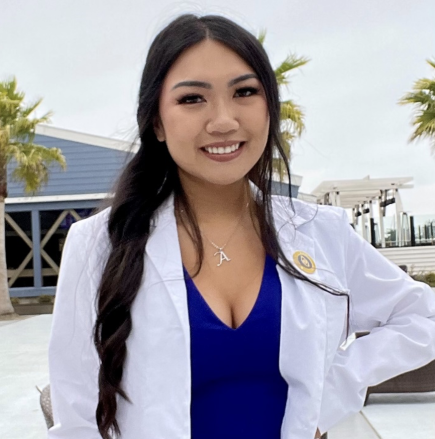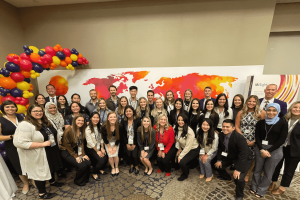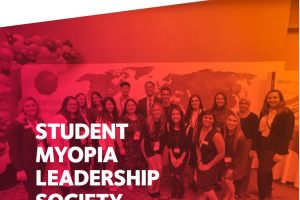
Berkeley student Aimee Vo had the opportunity to participate in a summer myopia management immersion experience recently. Read on for her thoughts on the experience.
What do you think are the characteristics of Dr. Jennifer Hsieh’s approach that get parents to say “yes” to myopia management?
Dr. Hsieh is truly passionate about what she does and the care she provides. She is very good at communicating the importance of myopia management to young patients and their parents. Her expertise in prescribing various methods of myopia management is very apparent from the initial consultation and she is always excited to work with new patients to find the best solutions for every case, regardless of how standard or how challenging it may be. Additionally, she is able to clearly communicate these benefits of myopia management with the Mandarin-speaking population. Thus, she is able to build a sense of trust and connection with her patients and parents that is unlike what I have witnessed in other offices. Many of her new Paragon CRT patients are referred by the parents of existing patients, because she takes such great care and effort to ensure every patient has the best results.
What do you feel are challenges to eye care delivery and how can myopia management make a difference?
One of the largest challenges to eye care delivery in the US is the perception that eye diseases don’t begin until later on, and by that time there’s nothing you or your doctor can do about it. An integral part of eye care is preventative care. Routine monitoring through exams and catching the early stages of disease before vision loss or deterioration occurs is key to the best patient outcomes. Especially for patients with high myopia, the risk for visual impairment and ocular disease can be 10-20x higher. Myopia management is a great opportunity for patients and families to understand why taking care of their eyes is so important. It gets the whole family involved in the lifelong journey of maintaining a healthy and clear visual system.
What are one or two memorable cases of children with myopia and their families that you can share with us?
Many of Dr. Hsieh’s CRT patients have been with her since they were little kids – 7, 8, 9 year old kids were frequently running around the office this summer. Although we did a good number of new fittings over the last few weeks, the striking interactions I encountered were with the patients who were in their late teens -- those who had years of CRT under their belts. These were the patients that I relished hearing their stories about how high school was going and how their myopia treatment was going. Kids, expertly removing their lenses without the doctor or parent’s help, chatting away about Zoom classes and senior graduation. Parents, brimming with pride, discussing what college and major their kids were going into. There was such an ease and fluidity to the way these families came into the office and made themselves at home in the exam room, as if they were comfortable friends coming for a visit. It highlighted the trust that patients place in us as their healthcare providers to advocate for their health and their families’ health.
How has this experience changed your outlook on the next three years of optometry school and beyond?
There is definitely an excitement for me to find my niche area of work. I loved the sense of patient interaction and sense of serving the community that you get when working in a private practice. But I also had my eyes opened to some of the inaccessibility issues that surround healthcare on a systematic level, whether it’s due to disability, language barrier, financial barrier, insurance navigation, physical location, or simply lack of advocacy or patient awareness. My current outlook includes constructing ways that we as students and clinicians can be part of the solution to take down these inequities. This goes beyond what happens in our own exam rooms.
In this profession, we are responsible for attaining the best outcomes for those that we care for and the patients who entrust us with their needs. This includes working to ensure that as many people are positively impacted as possible. It also includes advocating for what optometry is all about, because there are SO many cool innovations and growing fields. Long story short -- being able to help people see clearer is a wonderful and exciting craft, and I look forward to continuing my training over the next three years.
About the author:
Hey there, I'm Aimee and I'm a 3rd-year student at Berkeley Optometry. I'm from San Jose, California and I completed my undergrad at UCLA. I'm a huge proponent of work-life balance and enjoying the small moments in life. Outside of clinic, you can find me exploring a new restaurant, rock climbing (mostly falling), or spending time with my dog. Optometry is such an exciting and innovative career path and I'm absolutely motivated to continue training to the highest level.








